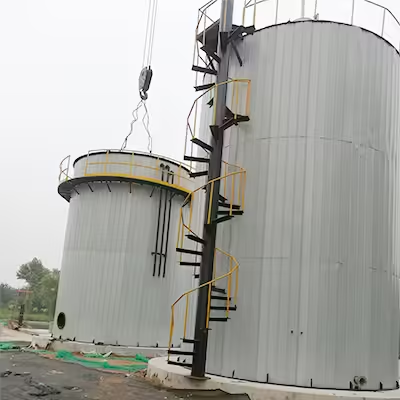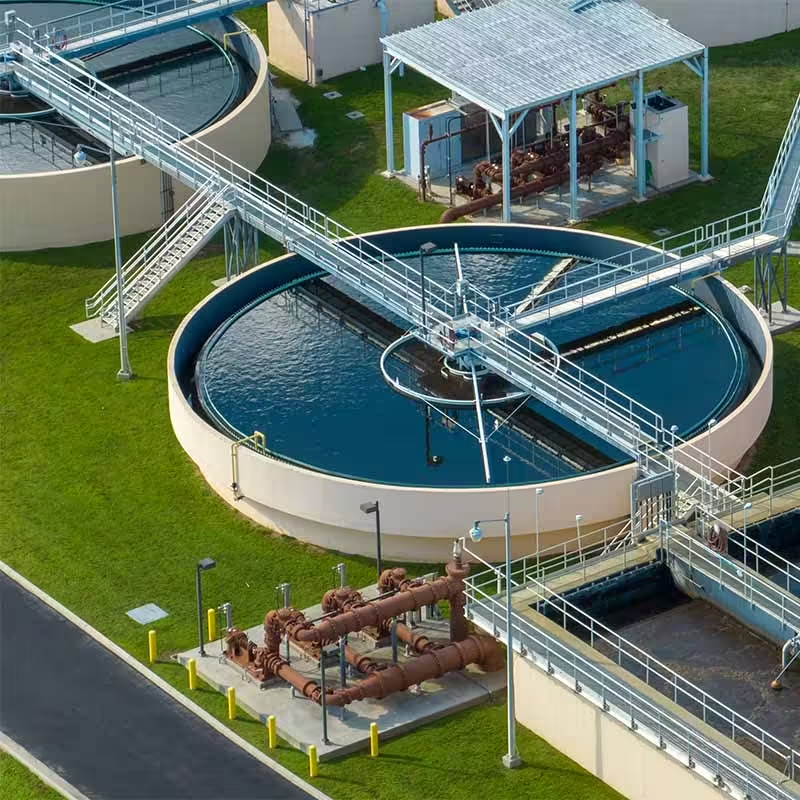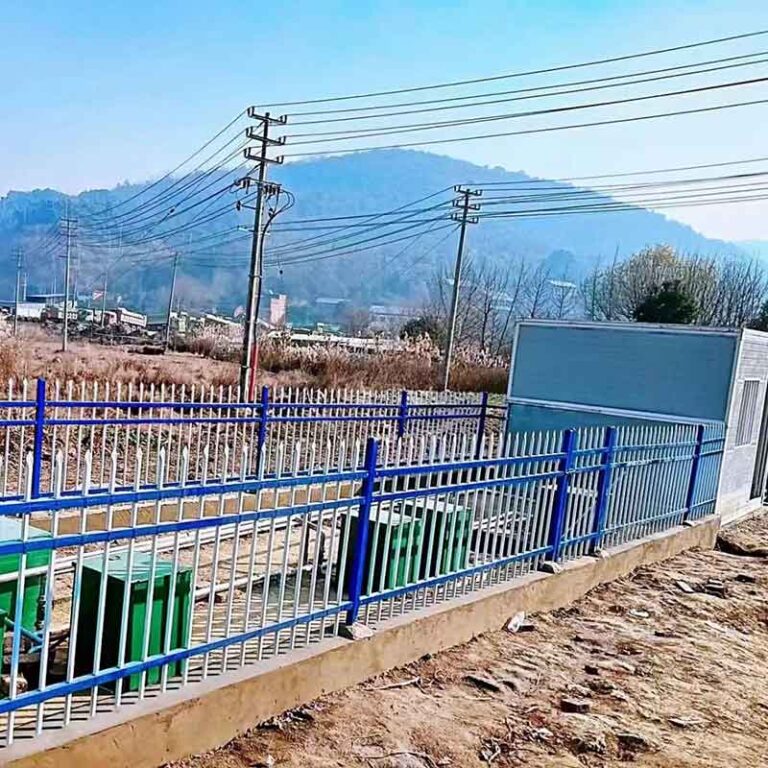Welcome to My Blog! 🌟
I’m so glad you’re here! Before we jump into the exciting content, I’d love for you to connect with me on my social media platforms. It’s where I share extra insights, interact with our amazing community, and post regular updates. Here’s how you can join the conversation:
📘 Facebook: Follow me on Facebook for more updates
Now, let’s dive into the journey ahead. I hope you find everything here both engaging and valuable. Together, let’s explore, learn, and grow! 🚀
Table of Contents
Introduction

The anaerobic tower is an essential component in modern wastewater treatment processes. Designed to operate without the presence of oxygen, the anaerobic tower facilitates the biological degradation of organic matter through anaerobic microorganisms. This system is widely used in industrial and municipal applications due to its high efficiency, cost-effectiveness, and environmental benefits.
Unlike aerobic systems that require energy-intensive aeration, an anaerobic tower offers a more sustainable solution. In this blog, we will explore seven powerful benefits of anaerobic tower use, focusing on operational advantages, economic impacts, and environmental significance.
1. Enhanced Organic Matter Breakdown
A fundamental function of this advanced biological wastewater treatment technology is the highly efficient decomposition of complex organic compounds present in industrial or municipal wastewater. Anaerobic bacteria residing within the system play a crucial role by metabolizing substances such as fats, proteins, and carbohydrates, transforming these complex molecules into simpler gases, primarily methane and carbon dioxide.
This biological degradation process not only stabilizes the waste materials, preventing further environmental harm, but also leads to a significant reduction in the biological oxygen demand (BOD) of the treated effluent. Lower BOD levels indicate that the water has fewer biodegradable pollutants, making it much safer for direct discharge into natural water bodies or ready for subsequent purification steps. By optimizing conditions such as temperature, pH, and nutrient balance, the system promotes the thriving activity of beneficial microbes, ensuring a consistent, reliable, and high-quality wastewater treatment outcome.
2. Energy Generation through Biogas Recovery
One of the standout benefits of utilizing this type of treatment process is its inherent ability to convert organic waste into valuable renewable energy in the form of biogas. As organic matter undergoes anaerobic digestion, a substantial volume of biogas—predominantly methane—is generated. This biogas can be effectively captured and stored for various uses, such as providing fuel for heating systems, generating electricity via gas engines or turbines, and in some advanced setups, serving as a clean fuel alternative for vehicles.
Recovering and using this biogas not only enhances a facility’s energy self-sufficiency but also helps reduce overall greenhouse gas emissions by offsetting the use of fossil fuels. Many wastewater treatment plants report that integrating biogas recovery systems leads to substantial reductions in their operational energy costs, turning a traditional waste management challenge into a valuable resource opportunity.
3. Cost Savings on Operation and Maintenance

Compared to traditional aerobic wastewater treatment methods, this anaerobic process offers significant operational and maintenance cost advantages. The system’s simpler mechanical setup—characterized by fewer moving parts and the absence of aeration blowers—translates to lower energy consumption and less frequent maintenance needs. This simplicity reduces the likelihood of mechanical failures and decreases downtime, contributing to overall facility reliability.
Moreover, the closed and insulated design of the reactor minimizes heat loss, which is particularly beneficial in maintaining the optimal temperature range required for anaerobic bacteria to thrive. This efficiency further reduces energy input. Additionally, because anaerobic digestion produces considerably less sludge than aerobic processes, the costs associated with sludge handling—including dewatering, transportation, and disposal—are significantly reduced. Together, these factors contribute to meaningful cost savings and make anaerobic treatment a financially attractive choice for wastewater management.
4. Minimal Sludge Production and Handling
Sludge management remains one of the most challenging and costly aspects of wastewater treatment. However, anaerobic digestion within this system significantly decreases sludge volume compared to aerobic treatment. The microbial populations actively consume a large proportion of organic matter, effectively converting it into biogas and biomass, which leads to a smaller quantity of residual solids requiring further processing.
With less sludge to dewater and transport, facilities benefit from reduced labor, equipment wear, and disposal fees. This not only cuts operating expenses but also lowers the environmental impact associated with sludge disposal. Reduced sludge production lessens landfill use and decreases potential contamination risks, making this technology particularly appealing for treatment plants aiming to improve sustainability and meet stricter environmental regulations.
5. Compact Footprint and Space Efficiency
In many industrial or urban areas, space is a premium commodity. The vertical design of this treatment system offers a compact footprint, enabling a high volume of wastewater to be processed within a relatively small physical area. This space-efficient configuration is a significant advantage when upgrading existing facilities or constructing new plants in locations where land is scarce or expensive.
The compactness allows easy integration into existing infrastructure or modular expansion without requiring large-scale construction projects. Despite their small footprint, these systems are engineered to maintain robust treatment performance and capacity, effectively handling substantial wastewater volumes without compromising efficiency. This combination of space savings and operational effectiveness makes the technology ideal for a wide range of applications, from municipal sewage treatment to industrial wastewater management in densely populated regions.
Table: Comparison Between Anaerobic and Aerobic Treatment Systems
| Feature | Anaerobic Tower | Aerobic System |
|---|---|---|
| Oxygen Requirement | Not required | Required |
| Energy Consumption | Low | High |
| Sludge Production | Low | High |
| Biogas Generation | Yes | No |
| Space Requirement | Compact | Larger footprint |
| Operational Costs | Lower | Higher |
| Maintenance Frequency | Less frequent | More frequent |
6. Improved Environmental Sustainability
Using an anaerobic tower significantly contributes to environmental protection. By converting waste into biogas, the system lowers greenhouse gas emissions and reduces reliance on non-renewable energy sources. Additionally, lower sludge output reduces the potential for soil and water pollution.
Moreover, the closed environment within the anaerobic tower limits odor emissions, making it suitable for facilities located near residential or commercial areas. These environmental benefits help industries meet stringent environmental regulations and improve community relations.
7. Versatile Applications Across Industries

The adaptability of the anaerobic tower makes it useful in a variety of industrial and municipal settings. It is effectively used in the treatment of wastewater from food processing plants, breweries, pulp and paper mills, and municipal sewage treatment facilities.
Its flexibility in handling different organic loads and ability to function under various environmental conditions makes it a reliable choice for wastewater management. Whether integrated into new developments or existing infrastructure, the anaerobic tower proves to be a versatile and robust solution.
Conclusion
As we’ve explored, the anaerobic tower offers numerous operational, economic, and environmental benefits. From energy savings and biogas generation to reduced sludge production and minimal space requirements, these systems provide a smart, sustainable solution for modern wastewater treatment needs.
Choosing an anaerobic tower can significantly improve your facility’s efficiency, lower operational costs, and help meet environmental compliance goals. Whether you’re managing a municipal treatment plant or an industrial operation, investing in this technology could be a forward-thinking step.
For facilities looking to upgrade or optimize their wastewater treatment process, the anaerobic tower presents a proven and future-ready solution.
FAQ
What is an anaerobic tower?
An anaerobic tower is a specialized vertical reactor commonly used in wastewater treatment plants. It facilitates the biological digestion of organic matter by creating an oxygen-free environment where anaerobic microorganisms thrive. These microbes break down pollutants effectively without the need for oxygen, making the system highly efficient for treating various types of wastewater.
How does an anaerobic tower work?
The system operates by harnessing the natural activity of anaerobic bacteria that digest organic waste materials. As the organic matter undergoes decomposition, the bacteria convert it into simpler compounds, notably producing biogas—a mixture mainly composed of methane and carbon dioxide. Simultaneously, the volume of solids in the waste is reduced, leading to a cleaner effluent. This biological process not only treats the wastewater but also recovers energy in the form of biogas.
What kind of waste can an anaerobic tower treat?
Anaerobic towers are particularly effective at handling high-strength industrial wastewater with a high organic load. Common applications include waste streams from food processing plants, breweries, paper mills, and other manufacturing facilities. They are also well-suited for municipal sewage treatment, where they help reduce organic pollution and generate renewable energy as a byproduct.
Is it expensive to maintain an anaerobic tower?
Generally, maintenance costs for this technology are relatively low compared to other treatment methods. Because the system contains fewer moving mechanical parts and does not require continuous aeration, the risk of equipment failure is reduced, and energy consumption is lower. This simplicity translates into less frequent repairs and reduced operational costs over time, making anaerobic towers an economically attractive option.
Can I integrate an anaerobic tower into an existing facility?
Yes, integration is often straightforward due to the tower’s compact vertical design. Many existing wastewater treatment plants can retrofit an anaerobic tower with minimal disruption to current operations. The space-saving nature and modular construction allow for easy installation with limited infrastructure changes, making it a practical upgrade for facilities seeking improved treatment efficiency and energy recovery.






